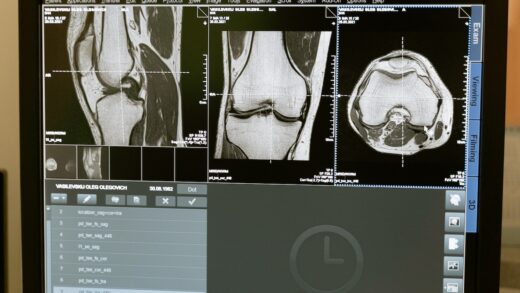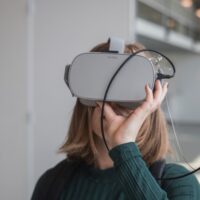Advances in 3D printing, also called additive manufacturing, are capturing attention in the health care field because of their potential to improve treatment for certain medical conditions. A radiologist, for instance, might create an exact replica of a patient’s spine to help plan a surgery; a dentist could scan a broken tooth to make a crown that fits precisely into the patient’s mouth. In both instances, the doctors can use 3D printing to make products that specifically match a patient’s anatomy.
And the technology is not limited to planning surgeries or producing customized dental restorations such as crowns; 3D printing has enabled the production of customized prosthetic limbs, cranial implants, or orthopedic implants such as hips and knees. At the same time, its potential to change the manufacturing of medical products—particularly high-risk devices such as implants—could affect patient safety, creating new challenges for Food and Drug Administration (FDA) oversight.
This issue brief explains how medical 3D printing is used in health care, how FDA regulates the products that are made, and what regulatory questions the agency faces.
What is 3D printing and how is it used in health care?
Unlike traditional methods, in which products are created by shaping raw material into a final form through carving, grinding, or molding, 3D printing is an additive manufacturing technique that creates three-dimensional objects by building successive layers of raw material such as metals, plastics, and ceramics. The objects are produced from a digital file, rendered from a magnetic resonance image (MRI) or a computer-aided design (CAD) drawing, which allows the manufacturer to easily make changes or adapt the product as desired.1 3D printing approaches can differ in terms of how the layers are deposited and in the type of materials used.2 A variety of 3D printers are available on the market, ranging from inexpensive models aimed at consumers and capable of printing small, simple parts, to commercial grade printers that produce significantly larger and more complex products.
To date, most FDA-reviewed products developed via 3D printing have been medical devices such as orthopedic implants; more than 100 have been reviewed.3 Such a manufacturing approach offers several clinical advantages. For example, manufacturers have used 3D printing technologies to create devices with complex geometries such as knee replacements with a porous structure, which can facilitate tissue growth and integration.4 3D printing also provides the ability to create a whole product or device component at once while other manufacturing techniques may require several parts to be fabricated separately and screwed or welded together.
Because this type of manufacturing does not rely on molds or multiple pieces of specialized equipment and designs can rapidly be modified, 3D printing can also be used for creating patient-matched products based on the patient’s anatomy. Examples include joint replacements, cranial implants, and dental restorations.5 While some large-scale manufacturers are creating and marketing these products, this level of customization is also being used at the site of patient care in what is called point-of-care manufacturing. This on-demand creation of 3D-printed medical products is based on a patient’s imaging data. Medical devices that are printed at the point of care include patient-matched anatomical models, prosthetics, and surgical guides, which are tools that help guide surgeons on where to cut during an operation. The number of U.S. hospitals with a centralized 3D printing facility has grown rapidly in the past decade, from just three in 2010 to more than 100 by 2019.6 As the technology evolves, this point-of-care model may become even more widespread.
3D printing also has potential applications in other product areas. For example, research is underway to use 3D printing to manufacture pharmaceuticals with the potential for unique dosage forms or formulations, including those that might enable slower or faster absorption. FDA approved one such 3D-printed drug in 2015, an epilepsy treatment formulated to deliver a large dose of the active ingredient that can disintegrate quickly in water.7 3D printing could also one day be used to make personalized treatments that combine multiple drugs into one pill, or a “polypill.”8 Additionally, researchers are using bioprinters to create cellular and tissue constructs, such as skin grafts9and organs,10 but these applications are still in experimental phases.11
How is 3D printing regulated?
FDA does not regulate 3D printers themselves; instead, FDA regulates the medical products made via 3D printing. The type of regulatory review required depends on the kind of product being made, the intended use of the product, and the potential risks posed to patients. Devices—the most common type of product made using 3D printing at this time—are regulated by FDA’s Center for Devices and Radiological Health and are classified into one of three regulatory categories, or classes. (The agency may also regulate the imaging devices and software components involved in the production of these devices, but these are reviewed separately.)
FDA classifies devices based on their level of risk and the regulatory controls necessary to provide a reasonable assurance of safety and effectiveness.12 Class I devices are low risk and include products such as bandages and handheld surgical instruments. Class II devices are considered moderate risk and include items such as infusion pumps, while Class III devices, which are considered high risk, include products that are life-supporting or life-sustaining, substantially important in preventing impairment of human health, or present an unreasonable risk of illness or injury. A pacemaker is an example of a Class III device.13
Regulatory scrutiny increases with each corresponding class. Most Class I and some Class II devices are exempt from undergoing FDA review prior to entering the market, known as premarket review; however, they must comply with manufacturing and quality control standards. Most Class II devices undergo what is known as a 510(k) review (named for the relevant section of the Federal Food, Drug, and Cosmetic Act), in which a manufacturer demonstrates that its device is “substantially equivalent” to an existing device on the market, reducing the need for extensive clinical research. Class III devices must submit a full application for premarket approval that includes data from clinical trials.14 FDA then determines whether sufficient scientific evidence exists to demonstrate that the new device is safe and effective for its intended use.15
FDA also maintains an exemption for custom devices. A custom device may be exempt from 510(k) or premarket approval submissions if it meets certain requirements articulated under Section 520(b) of the Federal Food, Drug, and Cosmetic Act. These requirements include, for example, that the manufacturer makes no more than five units of the device per year, and that it is designed to treat a unique pathology or physiological condition that no other device is domestically available to treat.16 In addition, FDA has the option to issue emergency use authorizations as it did in response to the COVID-19 pandemic for certain 3D-printed ventilator devices.17
All devices, unless specifically exempted, are expected by FDA to adhere to current good manufacturing practices, known as the quality system regulations that are intended to ensure a finished device meets required specifications and is produced to an adequate level of quality.18
In 2017, FDA released guidance on the type of information that should be included for 3D-printed device application submissions, including for patient-matched devices such as joint replacements and cranial implants. The document represents FDA’s initial thinking, and provides information on device and manufacturing process and testing considerations.19 However, the guidance does not specifically address point-of-care manufacturing, which is a potentially significant gap given the rapid uptake of 3D printers by hospitals over the past few years. FDA has also cleared software programs that are specifically intended to generate 3D models of a patient’s anatomy;20 however, it is up to the actual medical facility to use that software within the scope of its intended use—and to use it correctly.
Although specific guidance from FDA does not yet exist for 3D printing in the drug or biologic domains, these products are subject to regulation under existing pathways through FDA’s Center for Drug Evaluation and Research (CDER) or FDA’s Center for Biologics Evaluation and Research (CBER). Each product type is associated with unique regulatory challenges that both centers are evaluating. CDER’s Office of Pharmaceutical Quality is conducting its own research to understand the potential role of 3D printing in developing drugs and has been coordinating with pharmaceutical manufacturers to utilize this technology.21 CBER has also interacted with stakeholders who are researching the use of 3D printing for biological materials, such as human tissue. In 2017, former FDA Commissioner Scott Gottlieb said that FDA planned to review the regulatory issues associated with bioprinting to see whether additional guidance would be necessary outside of the regulatory framework for regenerative medicine products.22 However, no subsequent updates on this review have emerged.
For medical 3D printing that occurs outside the scope of FDA regulation, little formal oversight exists. State medical boards may be able to exert some oversight if 3D printing by a particular provider is putting patients at risk; however, these boards typically react to filed complaints, rather than conduct proactive investigations. At least one medical professional organization, the Radiological Society of North America, has released guidelines for utilizing 3D printing at the point of care, which includes recommendations on how to consistently and safely produce 3D-printed anatomical models generated from medical imaging, as well as criteria for the clinical appropriateness of using 3D-printed anatomical models for diagnostic use.23 Other professional societies may follow suit as 3D printing becomes more frequent in clinical applications; however, such guidelines do not have the force of regulation.













